NUMBER 63 |
SPRING 2006

NUMBER 63 |
SPRING 2006

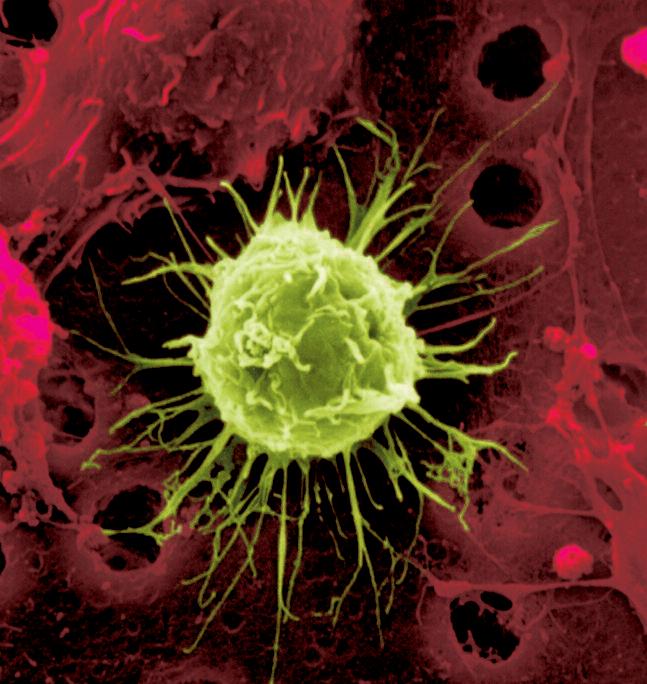

OFFICE OF DEVELOPMENT, ALUMNI RELATIONS AND COMMUNICATION
assistant dean of advancement and communication
KATEJUDGE
director of communication
GAILLUCIANI
Lassistant director of communication
SUSANI FINKELSTEIN
director of development for the matthew j. ryan veterinary hospital
ELANABECKARONS
director of development for new bolton center
JANESIMONE
major gifts officer
DORIMYERS
special event coordinator
COREENHAGGERTY
development coordinator for new bolton center
PATRICIAHALL
marketing communication coordinator for new bolton center
JENNIFERRENCH
constituent relations coordinator
ELIZABETHMcNAMARA
assistants
KARENCOGHLAN
JOHNDONGES
ANDREAWITHERS
JENNIFERWORDEN
photographers
JOHNDONGES
SABINALOUISEPIERCE
writers
ALANATCHISON
SUSANI FINKELSTEIN
KATHYKRUGER
NANCYWEST designer
ANNE MARIEKANE
We’d like to hear your praise, criticisms or comments.
Please address your correspondence to:
Gail Luciani, Editor University of Pennsylvania
School of Veterinary Medicine
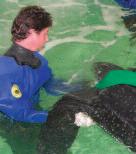
3800 Spruce Street
Philadelphia, PA 19104-6010
(215) 898-1475
luciani@vet.upenn.edu
None of these articles is to be reproduced in any form without the permission of the editor of Bellwether
C Printed on recycled paper
© Copyright 2006 by the Trustees of the University of Pennsylvania. The University of Pennsylvania values diversity and seeks talented students, faculty and staff from diverse backgrounds. The University of Pennsylvania does not discriminate on the basis of race, sex, sexual orientation, gender identity, religion, color, national or ethnic origin, age, disability, or status as a Vietnam Era Veteran or disabled veteran in the administration of educational policies, programs or activities; admissions policies; scholarship and loan awards; athletic, or other University administered programs or employment. Questions or complaints regarding this policy should be directed to: Executive Director, Office of Affirmative Action and Equal Opportunity Programs, Sansom Place East, 3600 Chestnut Street, Suite 228, Philadelphia, PA 19104-6106 or by phone at (215) 8986993 (Voice) or (215) 898-7803 (TDD).
3
4
14
22
25
about the co v er: Color-enhanced scanning electron micrograph of a stem cell collected from human bone marrow. Most tissues contain primitive cells, called stem cells, that can divide and populate tissue to correct damage. Bone marrow retains the ability to generate stem cells throughout life.
Bone marrow stem cells typically give rise to bone, blood and cartilage.

Last Saturday,I received the latest edition of Bellwether and started reading it before getting out of the car.Your new format and articles were so terrific I read it from cover to cover in the pouring snow.I remember having Dean Hendricks as an instructor and I felt like I was back at Penn making new memories with her and the staff.You’ve done a terrific makeover of my favorite publication.
I would make one suggestion for future issues.New Bolton Center should get equal (if not more) coverage to stimulate outside giving.It definitely needs a massive renovation and expansion and the Bellwether can help.If you notice in this issue:(1) only two articles are mentioned from NBC,and (2)
We appreciate your kind words and are happy to announce that the summer 2006 issue of Bellwether will feature some of the excellent work underway at New Bolton Center.As you know,we are beginning a major initiative to take the George D.Widener Hospital for Large Animals,as it becomes a model large-animal hospital for the
no research briefs are noted from NBC. My devotion to Penn is unquestionable and I would do anything within my power to ensure its continued success and expansion.Please keep up the good work and I look forward to the next issue.
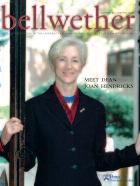
21st century.We hope you will enjoy this upcoming focus on a truly outstanding component of the Sc hool.
Our cover story in this issue of Bellwether focuses on the contributions to stem cell research being made by researchers on both campuses of the School ofVeterinary Medicine.From the groundbreaking germ cell work of Dr.Ralph Brinster, V’60,GR’64,to Dr.Mark Oyama’s stem cell research that might be used to treat dogs with heart disease,Penn Vet remains a key player in biomedical discoveries.
This emphasis on our mission of discovery has been reinforced by the recent appointment of Dr.Phil Scott,GR’80, to the position of associate dean for research.On p.5,Dr.Scott talks about the importance of research at Penn Vet and his new role.Be sure to read more about him in our enhanced online Bellwether, where you can also enjoy a new feature, Many Species... (www.vet.upenn.edu/bellwether/manyspecies.shtml). This Web page will highlight some of the more unusual species that f aculty and staff from our two hospitals have handled—
learn about “Du”the snow leopard’s surgery and “Thor”the camel’s lameness.Our Special Gifts section has been updated,as has Rosettes and Ribbons,our faculty accomplishments feature.
One big change you’ll notice in this print version of Bellwether is the advertisement on the back cover from one of our Penn Annual Conference partners.We’re excited about offering this opportunity to Pfizer Animal Health,a company that shares our commitment to protecting the health of pets and farm animals and the productivity of livestock.
We hope you will enjoy reading about developments at the School,and as always,we look forward to your feedback.
—GAIL LUCIANISome of the most rewarding moments of my career as an academician have been teaching enthusiastic young students the fundamentals of veterinary medicine.Equally fulfilling has been the research I’ve conducted,discovering new things. Many veterinarians at Penn and elsewhere are performing or supporting important research,but this aspect is much less appreciated by the general public, our clients and applicants to the School.
The widely held view of veterinarians as health-care providers for pets is certainly positive—but incomplete. Much of what veterinarians do is little understood by most people.This is not just a matter of feeling that no one loves us;it’s an issue of vital importance to our profession and to the public because what veterinarians do is crucial.
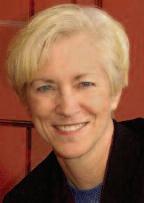
kind of work,to prompt people to say, “I didn’t know vets did that!”
The good news is that organized veterinary medicine (in the form of the American Veterinary Medical Association [AVMA]) and academic leaders throughout North America (through the American Association of Veterinary Medical Colleges [AAVMC]) are designing and supporting national programs to increase funding,awareness and especially the pool of incoming veterinary students, who realize their careers can extend beyond private practice.In our increasingly urban world,the only people who fully understand the link between animals and people may be veter inar ians, and we need to step up to fill the need.
On the order of 80 percent of veterinary school graduates go into private,individual-animal practice, which does fill an important need.We face a challenge, however:The numbers of veterinarians who perform research and care for the animals that serve society must be increased.After all,these vets protect the world’s food supply,which includes watching domestic and wild animals for new infectious diseases—especially those dangerous to people.We need to increase the awareness and supply of veterinarians involved in this
There is a real sense of coalitions being built at all levels of our veter inar y communities: across campus, the Commonwealth, the Nor theast metropolitan area (because we partner with the Manhattan-based ASPCA in our Shelter Animal Medicine Prog ram)—and across the nation and even the world with AAVMC initiatives. I have been more pleased than surprised at the level of support our School has from its own smart and devoted staff,students and faculty;from the University;from committed legislators;from loyal and resourceful alumni;from supportive friends of both hospitals;and from the powerful,committed and influential friends of Penn Vet who are our Overseers.Through alliances and outreach,we will achieve our goals.The challenges are difficult but the team is excellent.I look forward to celebrating success with all of you in the coming year.
—JO AN HENDRICKS,V’79,GR’80We need to increase the awareness and supply of veterinarians involved in this kind of work, to prompt people to say, “I didn’t know vets did that!”
Phil Scott,GR’80,was recently appointed to the position of associate dean for research,a new role at the School ofVeterinary Medicine.In addition to this appointment,Dr.Scott is a professor of microbiology and immunology and chairman of the Department of Pathobiology.Dr.Scott recently answered questions about his new role as well as research at Penn Vet.
Why is research important at Penn Vet?
Research is why we’re here.Our scientific investigation expands our knowledge;it’s at the core of what we do.Think of it this way:We’re responsible for teaching students,but what do we teach them? Where does that knowledge come from? It comes from basic,translational and clinical research,and this research is cr itical to both the finest teaching and the best in clinical care. We don’t want to be reading about what other Schools have created in new knowledge—we want to be doing it at Penn.It under pins our mission of teaching and healing.
What is translational research?
We have a strong prog ram of basic research, which we not only do well, but which we can sometimes translate into care for our patients. It’s a linear process,beginning with the basics of scientific discover y and ultimately translating into treatment for many species. It is not always clear how fundamental knowledge will be translated into a clinical benefit. But sometimes we’re lucky. For example, an on-going study at Penn Vet has evolved from basic research on lysosomal storage diseases to successful gene therapy in dogs and cats.Ultimately,it will have significant implications for humans afflicted with MPS disorders.While in that example,all that work has been a product of Penn Vet, knowledge can come from anywhere in science.For us,the key is to make sure that our basic science departments provide fundamental knowledge that has the potential to be translated by others into useful clinical treatments,and that our clinical departments have the strong translational and clinical research components necessary to take advantage of scientific advances made at Penn and elsewhere.
What do you see as the future of research at Penn Vet?
The future is exciting.For example,one major ongoing initiative is stem cell biology.We already have a great track record here,because we have Dr.Ralph Brinster,who did pioneering work in the development of transgenic mice,as well as several other researchers devoted to similar research.The new Hill Pavilion will include stem cell research labs.Other initiatives include infectious disease and food safety,which impact millions of people around the world.We continue to study zoonotic diseases,which includes the West Nile virus and avian flu,as well as other bacterial,viral and parasitic diseases of animals and people. The veterinary community has a responsibility to public health
in these areas.This brings up an important point that is sometimes overlooked.Veterinary medicine has much to offer human medical science—for example,as part of our oncology studies, we know that the spontaneous tumors that occur in cats and dogs are very similar to the ones that occur in humans.This makes them excellent models for studying the disease in humans. Here the development of successful treatments has a double payoff—treating animals and providing the foundation for treatments useful in human medicine.Similarly,work with genetic diseases common to animals and humans are often much easier to study in dogs and cats.
What opportunities does research provide to students?
There are wonderful oppor tunities for students, from the Merck summer program to our combined VMD/PhD program.The focus on research at both the School and the University helps ensure students understand the impor tance of science to medicine.One thing that sets us apart from other schools and makes us attractive as a place to study for students is that we belong to a large biomedical research community,giving them an opportunity to participate in cutting-edge research in countless disciplines.
Falsified research has been in the news recently—how can the public be sure that so-called breakthroughs are real?
To a large extent,science is self-correcting.When a claim is made,other scientists will first try to replicate it,and then build on it,in a process of repetition.This is how science as a field advances.So a researcher who falsifies work,particularly when it is of high visibility,will usually be caught by his or her peers.
What is the future of funding for the sciences?
The National Institutes of Health and USDA funding will be flat or decrease in the next few years,which will impact the ability of Penn Vet,as well as other institutions,to make progress in expanding our fundamental knowledge of disease,and translating that into clinical treatments.This means that we will have to be more efficient with our resources across all departments, be alert to opportunities that we might not have noticed before and be strategic about what we choose to do.
For more information about
For more information about Dr.Scott,see our Web site at www.vet.upenn.edu/bellwether.
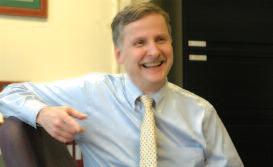
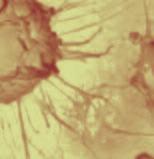
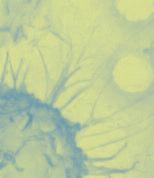
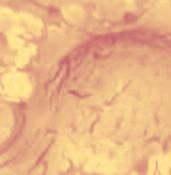
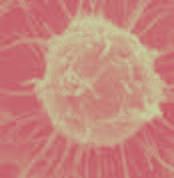 BY SUSAN I.FINKELSTEIN
BY SUSAN I.FINKELSTEIN
The process of discovery is very simple An unwear ied and systematic application of known laws to nature causes the unknown to reveal themselves.
—Henr y David Thoreauealing,Teaching and Discovery.” Undoubtedly,the general public is most familiar with the first part of the School ofVeterinary Medicine’s tr i-fold mission—and with good reason. The Matthew J.Ryan Veterinary Hospital in Philadelphia sees more than 28,000 companion-animal patient visits each year,12,000 of which come through the Emergency Ser vice. The George D. Widener Hospital for Large Animals at New Bolton Center accommodates more than 6,000 patient visits annually,and the Hospital’s William Boucher Field Service sees more than 19,000 animals a year.Both Hospitals are known internationally for their excellence in veterinary medical specialties,many of which originated here:cardiology, orthopaedics,oncology and medical genetics,to name only a few.Dogs,cats,birds,reptiles,horses,cows,pigs—all these,and more,can receive comprehensive treatment at Penn Veterinary Medicine,perhaps the best care anywhere in the world.
Most people are not aware,though,that the Discovery component of our mission undergirds the Healing and the Teaching for which the School is internationally acclaimed.Knowledge that emerges from the basic and clinical research of our scientists allows us to develop new ways to diagnose and treat disease—and to impart those findings to the next generation of veterinarians and researchers.As a partner in one of the world’s g reat biomedical research and training centers,Penn Vet helps both animals and people everywhere live longer,healthier lives.Truly,biomedical research is the unsung hero of our ongoing success stor y.
One area of research that is widely known to most people is the study of stem cells,the use of which is generating much optimism for treating human and animal diseases.For years,researchers at Penn and elsewhere have sought to understand why the body repairs and replaces some tissues,but not others.After analyzing apparently indiscriminant cell-repair mechanisms,scientists have focused on stem cells;these cells have a special capacity to renew themselves and form a variety of specialized cell types.Stem cells are capable of growing into any of the 300 different kinds of cells in the body.
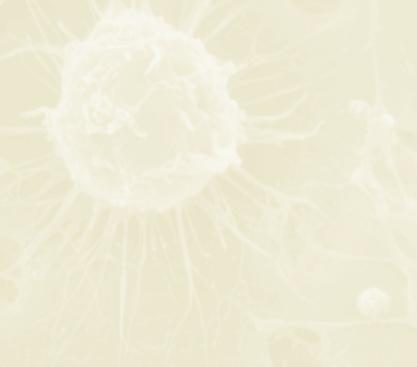





Scientists distinguish between two types of stem cells:adult and embryonic.Adult stem cells exist in developed tissues in animals or humans after birth,supplying their specific tissue with replacement cells throughout life.(For example,our blood stem cells produce five million cells per second.) Adult stem cells can be isolated from many parts of the body,including the brain, but most commonly they are drawn from the mar row in some bones.Compared to embryonic stem cells,which come from embryos and can make replacement cells for any tissue, adult stem cells are nor mally dedicated to making cells for one par ticular type In other words, adult skin stem cells usually can only make skin,not brain or blood cells.Most exper ts ag ree, though, that the potential of stem cells to prevent, diagnose and treat disease in both animals and people is seemingly unlimited.
Dr. Ralph Br inster, V’60, GR’64, Richard King Mellon Professor of Reproductive Physiology,is a pioneer in the transplantation of certain stem cells known as “germ cells,”which are the reproductive cells of the body—eggs in females and sperm in males.“Stem cell research is an area that has a lot of promise in terms of biology and medicine,”he explained.“For example,stem cells are responsible for maintenance of many tissues and medical conditions,including cancer,so understanding stem cells will help us understand disease.”
Dr.Brinster made international news in 1994 when he transplanted the stem cells of one mouse into another. When the stem cells became germ cells,they retained the genes of the donor mouse.In an article published in the February 2006 issue of Nature Clinical Practice,Dr.Brinster descr ibes a technique in which donor sperm cells from a fertile male mouse can be transplanted to the testes of an infertile male,where they can restore fertility.Eventually, this procedure can offer hope to men who have become sterile following chemotherapy or radiation treatment.
Working at New Bolton Center in Kennett Square,Pa., Dr.Ina Dobrinski,Dr.med.vet.,M.V.Sc.,Ph.D., Marion Dilly and David George Jones Chair in Animal
Reproduction and director of the School’s Center for Animal Transgenesis and Ger m Cell Research, acknowledges that much of the research in her lab has its roots in the ger m cell technology that Dr.Brinster developed in the mid-1990s. Dr Dobr inski is applying infor mation der ived from Dr.Brinster’s work in the mouse to nonrodent animals,ultimately to improve the health and productivity of f ar m animals through transplantation of male ger m cells whose genes have been manipulated.These genetically altered animals and plants are called “transgenic”and can be of enormous value in medicine and agriculture.In fact,transgenic animals were first created here at Penn,in 1981.
“Going into the male germ-line for particular stem cells was a very fascinating question because then the animal could just breed normally and transmit that fixed gene or changed gene to its offspring,”said Dr.Dobrinski.“In order to do that,to a certain degree we had to reinvent the wheel:We had to redevelop the transplantation technique [used in mice] because it doesn’t work the same way in pigs or goats.We had to learn about those stem cells because we don’t have the same reagents or antibodies available as we have for mouse stem cells.”One aspect of this work is the exploration of germ-line stem cell biology to develop a new approach to transgenesis in domestic animals through the alteration of the male germ-line.
In the November/December 2005 issue of the Journal of Andrology,Dr.Dobrinski and her colleagues relate another way in which changing the genes of certain animals can be beneficial.“...Transgenic pigs play a central
Cardiac cellular transplantation could have a marked effect in treating dilated cardiomyopathy,or DCM,one of the most common acquired heart diseases in large dogs.Some breeds,such as Dobermans,great Danes and boxers,are particularly prone to it. DCM causes the heart muscle to lose strength and fail to pump blood properly,and can eventually lead to heart failure.To identify genes that may play a role in the process of the disease,Dr.Oyama and his colleagues at Illinois used a commercially available gene chip, or microarray,designed for dogs—the GeneChip Canine Genome Array—a 1.5-inch square that contains more than 23,000 genes. When exposed to the genetic material from Doberman dogs that had died from heart disease,genes on the chip fluoresced,or lit up, if they were active in the sample.The researchers knew the nature and location of the genes on the chip,so they could identify the active genes in the samples and determine their level of activity by the brightness of the fluorescence.Essentially all 23,000 genes, tested at once,were narrowed down to 167 genes that could play a role in the development of DCM.
role as a potential source of tissues and organs for [transplantation] to humans and are of increasing interest as models for biomedical research.Similarly,transgenic dairy goats are of significant economic value for the production of biopharmaceutical proteins in their milk....”
Another ar ticle co-authored by Dr. Dobr inski in the same issue of the Jour nal of Andrology (published online ahead of pr int) explains how stem cell transplantation can help conser ve species of animals that are endangered due to loss of genetic diver sity “We are attempting to develop ..stem cell transplantation [of undifferentiated sperm cells] in the cat as a tool to preser ve and propagate male ger mplasm [DNA] from genetically valuable animals,be they threatened wild species or lines of cats used as models for inherited diseases.”
Some 35 miles away from the Center for Animal Transgenesis and Germ Cell Research, Dr.Mark Oyama, associate professor of cardiology at the Ryan Veterinary Hospital,has studied how stem cell research might be used to treat dogs with heart disease.Even with the development of new technology and medications,even with an everbroadening knowledge base about the causes and courses of heart disease,illness and death in dogs with heart problems remains high.According to the American Veterinary Medical Association,approximately 3.2 million dogs in the United States that have annual veterinary examinations suffer from some form of “acquired”heart disease and may be in heart failure.
Dr.Oyama came to Penn last year from the University of Illinois College of Veterinary Medicine,where he investigated how damaged heart cells in dogs could be repaired by transplanting the animals’own stem cells into their hearts—
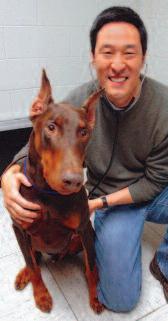
a process known as cardiac cellular transplantation. But the fundamental biological processes that govern the behavior of these cells remains a mystery,as does the long-term efficacy of the procedure.
“I think people get excited about it because of the huge potential that it has,”Dr.Oyama said. “Even in people,it’s an area about which very little is known.When they’re doing stem cell transplants in people,yes, it appears to improve the heart function,but when you ask the scientists ‘How is it doing that?’ nobody knows.They don’t have any idea.Cells go in there,and somehow they’re
function better.”
Cardiac cellular transplantation already has been perfor med in people who have suffered from heart attacks. The early results suggest that a variety of adult stem cells implanted in the heart are able to survive and grow into cardiac-like muscle tissue, “rebuilding the hear t one cell at a time,” as Dr Oyama wrote in Veter inary Medicine (February 1,2005).
Because a par ticular type of hear t disease in dogs involves much more of the heart than in people with a similar disease,local injections of cells during surgery— which is often used for people—would be inefficient for dogs. “If the whole hear t is diseased,that’s a lot harder.So now you have to put in maybe 20 or 30 of these little injections everywhere and hope that the cells spread out. Every time you poke the heart,it’s conceivable that the heart will have abnormal heart rhythms,it can bruise the heart muscle and create lots of other problems,”Dr. Oyama said.
One of the reasons that Dr.Oyama chose to come to Penn was its unique position as part of a vast network of biomedical research facilities—and he has already begun to take full advantage of the extraordinary opportunities this offer s.A certain kind of heart-valve disease in dogs resembles that which occurs in some people who have taken the diet drug “phen-fen”(a combination of phentermine and fenfluramine). Dr.Oyama has begun work with Robert J. Levy,M.D.,William J.Rashkind Endowed Chair in Pediatric Cardiology at the Children’s Hospital of Philadelphia, in looking at valve tissue in humans and trying to better understand how a certain pathway involving serotonin and transforming growth factor beta contributes
to the disease.(Serotonin is a neurotransmitter believed to play an important role in the regulation of mood,sleep, vomiting,sexuality and appetite. Transforming growth factor beta is one of many characterized growth factors that are involved in tissue development,cell differentiation,embryonic development and many other signaling pathways.)
“We are doing some combined experiments to compare mitral disease in dogs with mitral disease in humans,”Dr. Oyama explained.“If similarities exist,we can look at the dog as a model of disease for people,as well as apply what we know about the human disease to figure out why older, small-breed dogs are so predisposed to the disease.This comparative study hopes to merge Dr.Levy’s expertise in serotonin valve disease with our expertise in the canine disease.”
Cardiac tissue is not the only subject of stem cell research at the School.In the Section of Surgery of the Department of Clinical Studies–Philadelphia, Dr.Susan Volk,V’95, GR’99,lecturer,has joined the faculty at Penn’s Medical and Dental schools in studying how stem cells derived from bone marrow can eventually become bone cells.
Most injured tissues heal by forming a scar,but injured bone heals by actually forming new bone.Even in its uninjured state,bone undergoes constant remodeling to maintain its ability to move and support the body and to sustain constant calcium levels.Both these processes—healing and remodeling—are dependent on undifferentiated bone cells, as well as stem cells that can be induced to for m bone If the recr uitment, differentiation and/or induction steps of new bone formation do not occur,the body can develop or thopaedic disorder s such as osteoporosis and slow- or non-healing fractures. Because people in industr ialized countr ies are living longer,orthopaedic disease is having a g reater economic impact on health-care resources. This f actor, as well as the significant decrease in quality of life associated with these conditions,has made studies involving orthopaedic disease a high priority within the field of biomedical research.
Delayed bone healing in dogs requires extended medical care,with prolonged patient illness and increased client expense.Bone grafts using tissue from the patient’s own body are frequently used to help bone union after surgery. Several concerns,however,are associated with graft harvesting:problems or infection at the collection site, increased anesthetic time and limited volume and donor cell number.Bone-marrow stem cells (MSCs) are an accepted source of bone-forming cells recruited during normal bone growth,remodeling and fracture repair. Therefore,they are logical agents for use in cell-based therapies where induced bone growth is required.Pure populations of culture-expanded,inducible MSCs can be a potent alter native to bone grafting with fewer complications.
Although MSCs enhance the repair of canine fractures and bone gaps,the specific inducers necessary to cause canine MSCs to become bone-for ming cells have yet to be identified.Although MSCs from all species studied can be induced to eventually form bone cells,the potency of
inducers varies markedly from one species to the next.The work of Dr.Volk and her colleagues,published in the October 2005 issue of the American Journal of Veterinary Research, suggests that differences exist in the most efficient inducers of bone growth among species.“Defining which growth factors are most efficient to induce [bone formation] in these cells has important clinical implications for their use in cell-based therapies.In addition,we are defining differences that exist in the differentiation capacity of these cells based on their source (i.e.,site of bone-marrow harvest and age of donor),which has important implications for the development of MSC-based therapies in our small-animal surgical patients,as well as in humans,”Dr. Volk explained.
In addition to Dr.Volk’s interest in MSCs for orthopaedic applications,she is also investigating their use for soft-tissue surgical applications.In collaboration with Drs.Kenneth Liechty and Alan Flake at the Children’s Institute for Surgical Science,Children’s Hospital of Philadelphia,she has focused on establishing their effect in the treatment of oxygen-deprived (ischemic) wounds and dissecting mechanisms of their therapeutic effects.Complicated wound healing imposes a formidable clinical challenge in both human and veterinary medicine,with prolonged hospitalization and substantial health-care expenditure.To date, effective therapies for ischemic ulcers and other chronic non-healing wounds are lacking.Dr.Volk’s research suggests that MSCs directly participate in wound healing and indirectly influence surrounding cells to improve healing of ischemic wounds. Studies are underway to character ize how topical application of MSCs can improve the phases of healing in ischemic wounds.Knowledge about tissue eng ineer ing gained from this research can provide substantial insight into molecular mechanisms cr itical for healing chronic wounds and other ischemic tissues.
Research is the cornerstone on which Penn—and any other research university,for that matter—must build its future,on which medical science itself is perpetually balanced.Stem cell technology has already revolutionized modern biology and promises to provide unique opportunities in understanding mechanisms behind basic biological processes and in the treatment of disease.Among its countless applications in human and veterinary science, researchers hope to eventually use stem cells to repair spinal cords;cure Crohn’s,Alzheimer’s and Parkinson’s diseases;re-grow arteries and limbs;replace damaged kidneys and hearts;cure diabetes by substituting nonfunctioning pancreatic cells;restore vision and hearing;and treat leukemia,lymphoma and brain cancer.In fact,most of these treatments have already been studied,and with promising results.Granted,years of additional research are still necessary to realize this technology’s full therapeutic potential,but work at Penn Vet in the laboratories of researchers like Drs.Brinster,Dobrinski,Oyama and Volk—and in labs across campus and around the world—is proceeding full steam ahead.
n 1978, amidst the turmoil of the Iranian Revolution, Mohammad and Mino Ebrahimi emigrated to the United States to build a better life for themselves and their two young daughters, Mina and Mar iam.In the same year,“Connections,”a documentary television series,aired its first episode.The show detailed how history is filled with seemingly unrelated events that are actually connected in the most surprising ways.Mina Ebrahimi’s life lends itself to its own special set of “connections”—occurrences that,link by link, have led her here to Penn Vet. The last link, specifically, came in the guise of a chocolate Labrador retriever named “Jack,”but the process had been set in motion much earlier
At the age of nine, newly settled with her parents in Amer ica,Mina was introduced to the food-service industr y—eventually her life’s work—at a small baker y the Ebrahimis bought in Seven Cor ners,Va.Her family’s success soon allowed them to purchase the Daily Croissant,and later,in 1988,a restaurant in the Tysons Galleria mall called the St.Germain Café.Here Mina learned the art of multi-tasking:cooking,washing dishes, waiting tables and managing.In her process of becoming “Americanized,”Mina made fast friends at the Galleria, connections that would later help her develop business contacts when the Ebrahimis expanded their café into a catering business.Her long-term relationships with organizations like the AIDS Foundation,the Ronald McDonald House,the Washington Redskins and the Easter Seals all had their roots here,where mall management turned to the Ebrahimis for catering conferences and local holiday events.
“Just getting the business off the ground and building a consistent clientele was hard,”Mina admits.“But the cater ing business got so big because there is such a need for it in the whole Washington area.”Today,St.Germain Caterers,run solely by Mina,serves the entire region,with customer s ranging from government officials to pharmaceutical companies.Equally far-reaching is Mina’s generosity;she has supported charities as diverse as the
IAmerican Red Cross,Fairfax Fire and Rescue and Women in Technology,to name a few.
In fact,in 2003 this largesse prompted Mina to cheer up a despondent family friend,Sarah Miller,by presenting her with a small brown puppy she called “Jack.”All was well until Jack became lethargic,refused to eat and was vomiting frequently.Soon blood appeared in his urine and he had severe diarrhea.Two veterinarians in the Virginia area each diagnosed a urinary tract infection and sent him home with antibiotics.Jack showed no improvement. Mina paid the rising medical bills,and Sarah suggested they become co-owner s of Jack.
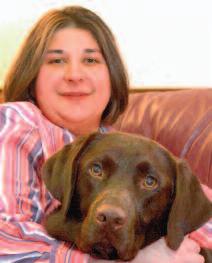
Finally, a third veter inar ian,suspecting the puppy’s condition was more serious,ran blood work.Enzyme levels indicated that Jack had a liver shunt, a congenital problem in which the liver is depr ived of a blood supply and cannot develop properly.Many puppies can live with the small functioning por tion of the liver for a shor t per iod but usually die if the situation remains uncor rected.The doctor recommended a procedure to surgically close the shunt,and Mina readily agreed.
Then,at 10:00 on the night before the surgery,Jack’s veterinarian called with some last-minute guidance.“He asked me if I was willing to travel to Philadelphia,”Mina remembers,“where there was a surgeon who was doing a new procedure.Of course,I was willing!”In two weeks’ time,Jack and Mina had an operation scheduled at the Ryan Veterinary Hospital with Dr.Chick Weisse,V’98, assistant professor of soft tissue surgery.
Rather than traditional veterinary surgical procedures that require large incisions and can be risky,Dr.Weisse and the surgery team used a minimally invasive interventional radiology technique that,until recently,had only been performed on people.Metal coils were inserted into the shunt to promote coagulation,eventually closing off the unusually large hole in Jack’s liver.The operation was a success,but about a month later,when the dog was being weaned off his medications and his low-protein diet,
things took a turn for the worse.He again became lethargic and depressed,was pale,and had a belly full of fluid.Once again,Mina brought Jack to several local veterinarians and a veterinary referral hospital;at each place,doctors recommended putting the young dog to sleep because of limited treatment options.Never giving up hope,Mina decided to come back to Penn.
Dr.Allyson Berent,Waltham Lecturer in Minimally Invasive Diagnostics and Therapeutics and lecturer in small animal internal medicine,remembers her first encounter with the pair.“They came in through the Emergency Service and Jack was transferred to Internal Medicine the next morning.I took his case,and it just turned out that he had a bad gastric ulcer.Because of the ulcer,he was losing lots of blood and protein.We gave him about 12 plasma transfusions and five or six blood transfusions.We treated him medically with different antacids and gastrointestinal protectants,time and support.It took a lot of time and persistence.We needed to give the ulcer time to heal.We also put him back on the shunt medications.”
A recurrence of the ulcer in 2004 met with the same bleak,previous prognoses:three emergency veterinary clinics in Virginia determined Jack would not live very long and should be euthanized.It was the Friday before Memorial Day,and most people were beginning their long holiday weekend. Frantic and in tears,Mina telephoned Dr.Berent and caught her on her way to a family event in New York.
“Mina’s local vet said the dog had a perforated intestine and was septic,so would have to be put to sleep,”recalls Dr.Berent.“I said,‘Mina,don’t put him to sleep.Bring him here and let’s be sure of what is going on.’So Mina got here late Friday night.”
Per Dr.Berent’s instructions,Jack was kept alive via fluids and more blood and plasma until Monday,when she returned.Even the Ryan staff members, however,were unsure if he would make it.First thing Monday morning,Dr. Berent examined Jack and decided to continue with steady medical treatment, as each day he was improving slowly. He went home nearly one week later. Over the following year, as Jack was slowly weaned from the medication,his protein levels came up and eventually all his liver functional testing was normal.
Mina is still emotional when she remember s Dr Berent’s painstaking care “I was ver y thankful. You could really feel Allyson’s caring.She was so supportive and encourag ing,saying,‘Don’t worry.Hang in there.Give him time and we’ll see. He’s going to be okay.’ Some nights she even stayed at the hospital with Jack.” And because of the experience they shared,Mina and Allyson have since become close friends.
“He was a little runt,and now he’s 92 pounds,”Dr.Berent laughs.“Usually dogs with shunts never grow to full size, and he just grew and grew and did great.He’s totally off his meds now and is completely fine.”
Because she is so grateful to staff at the Ryan Veterinary Hospital for saving Jack’s life when so many others had written him off,Mina will contribute a portion of St.Germain Caterers’ profits to the Hospital.Through this ongoing g ift,Mina is excited to be able to fund the Jack Miller-Ebrahimi Program for Interventional Endoscopic and Radiologic Diagnostics and Therapeutics here.Truly,the connections that have brought Mina to the Hospital will benefit animals for years to come.
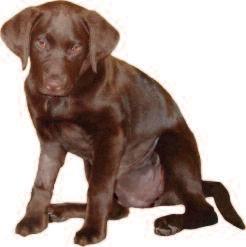
Many of Penn’s veterinary specialists are pushing forward new disciplines. This is certainly true of the Minimally Invasive Interventional Radiology and Interventional Endoscopy Service at the Matthew J.Ryan Veterinary Hospital.This program is the first of its kind to be established at any veterinary teaching hospital in the country. Drs.Chick Weisse,V’98,assistant professor of soft tissue surgery,and Allyson Berent, Waltham
Lecturer in Minimally Invasive Diagnostics and Therapeutics and lecturer in small animal internal medicine,are performing minimally invasive and surgical techniques for such ailments as tumors,liver shunts,urinary stones,bile-duct obstructions,tracheal collapse and life-threatening nose bleeds.Their specialty is referred to as inter ventional radiology.
An established tool in human medicine,interventional radiology has tremendous potential for the treatment of ser ious maladies in pets. Interventional radiology involves the use of contemporary imaging methods to deliver therapeutic mater ials to different systems. The veter inar y community is acquir ing and refining similar procedures as human medicine to provide nonsur gical alter natives with decreased morbidity/mor tality r ates, minimal anesthesia time ,shorter hospital stays and lower costs. Inter ventional r adiology utilizes fluoroscopy to visualize the placement of catheter s, stents,balloons and coils into blood vessels,the urinary system,the respiratory system and other tubular structures.Interventional endoscopy uses an instrument called the endoscope under fluoroscopic guidance for diagnostic and therapeutic endeavors like clearing malignant obstructions in the urethra,ureter,bladder,common bile duct or intestines/colon;opening strictures in the urinary system,nasal passages,trachea or intestine; relieving bile-duct obstructions secondary to obstructive pancreatitis,choleliths,infection or tumors;and pulverizing stones in the urinary or biliary system,a process known as lithotripsy. These procedures are still lar gely experimental in animals and being studied at Penn for many different applications in our companion animal patients.
For more information about Inter ventional Radiology please see the Web site at www.vet.upenn.edu/ departments/csp/crossdiscipline/ir/
The impact of Johne’s disease on the Pennsylvania dair y industry has the potential to produce catastrophic results.A growing threat,Johne’s disease is an intestinal infection that affects r uminants such as cattle, sheep, goats, deer, antelope,llamas and bison.If biosecurity measures are not implemented at its root causes,Johne’s disease can quickly become a very serious health hazard and result in major economic losses for a given flock or herd. According to Penn State’s College of Agricultural Sciences,between 20 and 40 percent of the dairy herds in Pennsylvania may have cattle with Johne’s disease.Although beef cattle also can be infected,it is much less common.If dairy producers do not act to prevent the spread of Johne’s disease,the Commonwealth’s dairy operation will eventually decline in production.

Dr.Robert Whitlock,associate professor of medicine at New Bolton Center,has been working closely on testing methods of Johne’s disease.He was recently contacted by Alaska state veterinarian Dr.Robert Gerlach,V’82,who is responsible for ensuring the movement of 100 bison into the state.Due to Dr.Whitlock’s research with emphasis on alter native culture methods to grow the mycobacterial bug,Dr.Gerlach requested that the herd of bison be tested to ensure all are free from or have a low risk of Johne’s disease.A small group of yaks,moose and wood bison are also being tested for Johne’s disease as par t of the collaborative effort.
Johne’s disease (pronounced “yo-knees”) is caused by Mycobacterium paratuberculosis,a close relative of the bacterium that causes tuberculosis and Crohn’s disease in humans. The organism, which is shed in manure,is most commonly spread by placing an unknowingly infected animal within a healthy herd.Individual animals contract the illness by consuming manure-contaminated feed materials,most frequently during the peri-
natal time period.Many times,the transmission of Johne’s disease occurs without the owner’s awareness of any health problems due to its prolonged incubation period;it can be as long as 10 years before clinical signs develop. M.paratuberculosis is a very hardy organism that is resistant to hot and cold temperatures and dry conditions,and can survive in soil or water for more than a year.Newborn animals are the most susceptible to the disease,with many infections occurring either in utero or by drinking milk or colostrum infected with the bacterium following birth.
Animals infected with Johne’s disease typically don’t show any symptoms until at least two years after initial contact with the bacterium.Signs of the disease include rapid weight loss and chronic protracted intermittent diarrhea that is unresponsive to treatment.Occasionally,several weeks after the onset of diarrhea,animals may develop a soft swelling under the jaw,a symptom known as intermandibular edema or “bottle jaw.”Bottle jaw results from a loss of protein from the bloodstream into the digestive tract.Animals exhibiting bottle jaw symptoms often are not expected to live longer than a few weeks.
Johne’s disease is difficult to detect due to its slow and progressive nature.The bacterium causes a gradual thickening of the intestinal wall,which interferes with the absorption of nutrients in the consumed feed materials.
Over time,the animal may start to lose weight,despite a normal appetite,resulting in a wasting away of the body even as the animal continues to eat.
Biosecurity measures during the perinatal time period reduces the possibility of introducing Johne’s disease into any given herd.Some general disease-prevention strategies include:
• Creating clean environments for ruminant births.
• Reducing newborns’exposure to manure of other animals.
• Avoiding manure contamination of food,water and other drink sources.
• Cleaning udders and teats before collection of milk and colostrum.
• Never feeding pooled milk or colostrum to young ruminants.
Because the symptoms of Johne’s disease occur late in the infection cycle,all animals should be tested for M. paratuberculosis before brought into a herd.The three most common ways to test animals for the disease are through culture of fecal samples from animals in the herd of origin, DNA probes on fecal samples and blood tests for antibodies to M.paratuberculosis.Manure samples from animals in the herd of origin are more likely to detect infection than when only one animal being sold from a herd is tested.
The initial concern regarding the movement of the 100 bison arose from the detection of a new strain of M. paratuberculosis, one par ticularly prevalent in bison from the wester n United States. Since that time, Dr Whitlock’s laboratory has successfully developed the culture medium to g row the par ticular strain. Fecal cultures of yaks, moose and on-the-move bison were subsequently sent to Dr.Whitlock’s lab,which then set into motion the methods to detect the so-called “bison strain” or other strains that may infect bison. Dr. Whitlock stated that the cultures of fecal samples from a representative number of these bison were set up at the end of December 2005 and,if present,take about four months to grow.“At that time,”he said,“we will know if the bison looking to be moved into Alaska are infected.”
Currently,there is no cure for Johne’s disease,what is often,unfortunately,a silent killer.However,through the growth and study of M.paratuberculosis,the ability to properly diagnose infected animals will become easier,and the chances of developing an effective vaccine or treatment will increase dramatically.
As much as 40% of Pennsylvania’s dairy herds may have cattle with Johne’s disease.If dairy producers do not act to prevent the spread of the disease,the Commonwealth’s dair y operation will eventually dec line in production.

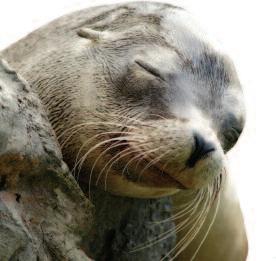
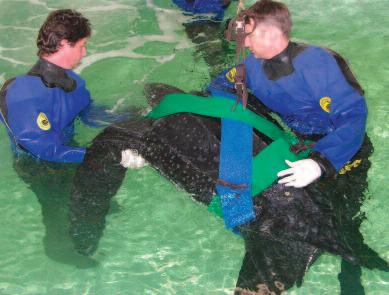
cott Weber,V’97,is living his childhood dream. “Since I was very small,I always knew two things—I wanted to be a veterinarian and I wanted to keep fish,”recalled Dr.Weber.As head veterinarian and research scientist at the New England Aquarium since 2001,he “keeps”more fish and other aquatic life than he ever imagined!
No two days are alike for Dr.Weber and his staff of nine,who respond to the veterinary needs of injured or ill aquatic animal patients in more than 650 very diverse species in a collection of more than 31,000 animals.Their patients range from fish with cancer to diseased invertebrates and coral to sea lions with cataracts.They also assist in the rescue and rehabilitation of stranded marine animals along the New England coast,primarily dolphins, whales,seals and sea turtles.
In 2005, Dr. Weber and his colleagues cared for more than 230 new patients.They also conducted a large-scale quarantine of more than 475 fish from two collecting tr ips. “All animals enter ing the aquar ium undergo a quarantine program,which is an essential element of preventive care,”he explained.
Dr.Weber enjoys the diversity of his work.“When I arrive each day,I never know whether I’ll be called into our medical center for emergency surgery or out to the beach to help rescue a stranded marine animal.”
The aquarium experienced an unusually high incidence of strandings this winter due to the warmer-thanaverage weather in the northeastern United States.“This year,we’ve responded to more than 130 whales and dolphins that have stranded along Cape Cod,”he noted.“We also see a lot of sea turtles who strand after being blown out of the warm Gulf Stream by Nor’Easter winter storms.Most of them develop pneumonia from aspirating sea water after they are chilled.The most extreme case we received this year had a core body temperature of 37 degrees [Fahrenheit].Many also have flipper injuries and shell fractures because they’ve been hit by boats or pounded by the surf.”
Dr.Weber said that the aquarium’s relationship with highly respected individuals in the medical,environmental and veterinary professions in New England gives them access to “some incredible diagnostics.”
“My colleagues and I work with a pulmonary specialist from Harvard who gives us insight into diagnostics and pharmacokinetics that may not be accessible in the veterinary literature,”he explained. “Endosocopy,for example,is becoming an important diagnostic and therapeutic tool for our patients.We perform bronchoscopy on stranded sea turtles to identify the actual agents that are causing the pneumonia so we can provide the most appropriate treatment.We also take endoscopic biopsies of the liver,spleen and gonad from fish patients to look for systemic infections.”
Dr.Weber and his colleagues also conduct clinical and conservation medicine research that often benefits the aquatic animals they treat. Cur rently, they are involved in a three-year investigation to evaluate the efficacy of various for ms of vitamin D supplements during rehabilitation of sea tur tles. “We’ve also been satellite-tracking three healthy head-star t loggerhead tur tles released off souther n Cape Cod,”he explained.“We know that they made it down to the Carolina coast successfully.”
Other cur rent research projects include analyzing the blood values of stranded dolphins and post-release monitoring of them using satellite telemetry to determine whether they can be successfully relocated,and conducting fish-health surveys on the Amazon River in Brazil to promote a sustainable fisheries initiative.
Dr.Weber said that Penn’s aquatic animal medicine curriculum was invaluable in preparing him for his career.As one of a handful of veterinarians ever to receive the prestigious Thouron Fellowship,he pursued additional training in the U.K.,where he received a master’s degree in aquatic pathobiology at the University of Stirling Institute of Aquaculture.He also completed a year of postgraduate research in immunology at the University of Edinborough.
Now as an adjunct professor of aquatic animal medicine for the School,Dr.Weber teaches an annual program in aquar ium veterinary medicine.“The New England Aquarium is an integral part of the curriculum for Penn’s Aquavet® program,”noted Dr.Weber.“I’m proud to be par t of it and gratified to have the ability to inspire more students to get involved in this incredible field.”
With the opening of the School’s new Vernon and Shirley Hill Pavilion scheduled for this fall,I am delighted to share the good news with you that Alumni Day 2006 is coming back to Philadelphia on Friday and Saturday,October 6 and 7.Special guests at this year’s event will include faculty from every decade.
I also am delighted to announce the arrival of Kate Judge as the new assistant dean for advancement and communication (see p.24).With her arrival in March,Kate began the interviewing process to fill the alumni director position vacated in early 2005.I also invite you to review the 2005 Alumni Liaison Report at www.vet.upenn.edu.Beginning this year,annual reviews of both campuses will be available on-line.
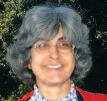
I am pleased to report that we have made progress in reestablishing the class agent program.Through the hard work and efforts of Robert Stewart,Jr.V’99,St.George Hunt,V’86,Rob Mankowski,V’04, and Dave Martin,V’66, the majority of our class agents have been contacted.With this issue of Bellwether,we hope to have many alums register and update their contact information by joining the Penn Alumni On-Line Community at www.alumniconnections.com/olc/pub/UPN.In addition to access to a class directory and a permanent e-mail forwarding service,the On-Line Community provides numerous other ser vices. Another way to update your record is by contacting Elizabeth McNamara at (215) 746-7461 or via e-mail at emcnamar@vet.upenn.edu.
I also want to remind you of the Alumni Society’s new electronic communications system, a free listser v,by which you can keep in touch with your classmates (more information on p.16).Your privacy is ensured, as all updates to the listser v are handled by the School. We are working hard to keep our graduates in touch with each other and the School.
With the success of the Kresge Challenge last fall,the dedication of the Vernon and Shirley Hill Pavilion,the designation of 250 of the 256 classroom seats and the naming of all but one group study room in the new building,we have a lot to be proud of.Much thanks goes to Penn Vet alums and their wonderful generosity.In fact,the majority of group study rooms and seminar rooms and one of the two classrooms are sponsored by our alums.What a wonderful tribute to our alma mater!
We look ahead to the 25th-anniversary celebration of the Ryan Veterinary Hospital building on May 5,followed by more activities in the fall:the Hill Pavilion Dedication,the Rosenthal Imaging Center Grand Opening,the Huidekoper Dinner and Alumni Day.Please join our new dean there for a special reception,reunion dinner,our annual picnic (held this year in the new library),tours of the Hill Pavilion and the Ryan Veterinary Hospital and so much more.
In closing, I again remind you of your importance to the School—it wouldn’t exist without you! Please share with us your thoughts and suggestions.Your input is vital to the future of the School. Thank you.
—MARILYN WEBER, V’751954 – David A.Meirs II was chosen chairman of the New Jersey Sire Stakes Board ofTrustees In 1999,Dr. Meirs was honored as Horseperson of the Year by New Jersey’s equine industry at the 42nd Annual Breeders Awards Dinner.Dr.Meirs is founder and president of Walnridge Farm and Equine Clinic,a Standardbred breeding facility in Cream Ridge,Monmouth County, N.J.,since 1965.
1974 – In December 2005, Stuart Porter helped secure full AVMA accreditation for a Veterinary Technology Associate Degree Program at Blue Ridge Community College in Weyers Cave,Va.Dr.Porter serves as director and professor in the college’s Veterinary Technology Program.
1977 – Randy Abelson was featured in the October 16, 2005 edition of the Philadelphia Inquirer for her efforts to help animals caught in the aftermath of Hurricane Katr ina.She assessed and treated animals at a makeshift medical unit in Gonzales,La.In 1985,Dr.Abelson founded the Gloucester County Animal Hospital in Sewell,N.J.
1983 – In October 2005, Mark W.Logan was honored with the 2005 Cape May County (N.J.) Chamber of Commerce Conser vation Award.For the past 20 years,he has acted as staff veterinarian for the Wetlands Institute in Stone Harbor, N.J. Dr. Logan has volunteered his hospital as a “repair center” for injured diamondback terrapins in need of carapace repair;each year,hundreds of terrapins are injured or killed on the roadways leading out to the barrier islands of southern New Jersey.
1988 – Eric K.Dunayer,a consulting veterinarian in clinical toxicology at the ASPCA Animal Poison Control Center in Urbana,Ill.,has become a diplomate of the American Board of Toxicology,Inc.
1992 – Don Neiffer passed the American College of Zoological Medicine board examination in October 2005. He is currently veterinary operations manager for Disney’s Animal Programs,Lake Buena Vista,Fla.,and has been involved in zoological and wildlife medicine for nearly 14 years.
1997 – Emi Saito joined the USDA Veterinary Services in September 2005 as a veterinary epidemiologist.She became a member of the National Sur veillance Unit in the Center for Epidemiology and Animal Health and
works on surveillance planning of national animal health programs.She is currently stationed at the National Veterinary Services Laboratory (NVSL) in Ames,Iowa, where her work focuses on laboratory testing issues at NVSL,Plum Island Animal Disease Center and the National Animal Health Laboratory Network for early disease detection,as well as coordinating with Emergency Programs’preparations for emerging and foreign animal diseases.
1998 – In January, Michael Bodri became North Georgia College and State University’s dean of the School of Natural and Health Sciences.Previously,Dr.Bodri served as chair of the Biological Sciences Department at Northwestern State University in Natchitoches,La.
1997 – Alisa Siceloff (nee Iriye) was married on June 21, 2005.She and her husband John currently live in Panama City,Fla.
2002 – Sarah Newton D’Oench mar ried Dr.Thomas Michael Jenei on September 10,2005.Dr.D’Oench is an associate with the Massachusetts Equine Clinic in Uxbr idge, Mass.
1936 – H. Rober t Becker on September 2, 2005.
1947 – Norber t R.McManus on November 30,2005.
Are you familiar with Penn’s On-Line Alumni Community? It provides a free service to all Penn graduates that allows you to find a former classmate,sign up for an email forwarding service and update your alumni record.
As we reactivate the class agent program,you can register and update your contact information by visiting www.alumniconnections.com/olc/pub/UPN.Once registered,you can search the On-Line Directory networking and an easy way to keep up-to-date on fellow alums.The permanent email forwarding service will forward messages received at your permanent Penn e-mail address to the one of your choice.
Another way to reconnect with Penn Vet and classmates: Take advantage of the Penn Vet Alumni Society’s new electronic communications system,a listserv,by which you can keep in touch with your classmates. The listserv is free and your privacy is ensured.Take advantage of this service by sending your preferred e-mail address to coghlan@ vet.upenn.edu,or call (215) 573-4674 for details.
The Class of 1955 marked its 50th reunion by raising $100,000 to name a new seminar room in the Vernon and Shirley Hill Pavilion.The seminar room will be a space where research and clinical scientists,working side by side, will train future veterinarians while developing new treatments and technologies to ensure the health and welfare of humans and animals through education, research and healing.The Class of 1955 Seminar Room will be located on the second floor of the Vernon and Shirley Hill Pavilion,poised to open in the fall of 2006. The Hill Pavilion represents the first new Penn Veterinary Medicine building in Philadelphia in 25 years.
The Class of 1980 marked its 25th reunion by establishing the Class of 1980 Endowed Scholarship.Class member Larry DeGeorge spurred his classmates into action by
offering a $50,000 scholarship challenge if the class could raise an additional $50,000.The class exceeded its goal by raising more than $100,000 toward an endowed scholarship named in honor of the class.As class member Hilton J.Klein explained,“In addition to our roles as veterinarians,our role as alumni is equally critical.We have the responsibility of ensuring the future success of Penn Veterinary Medicine,and our soon-to-be colleagues who will graduate from there.”
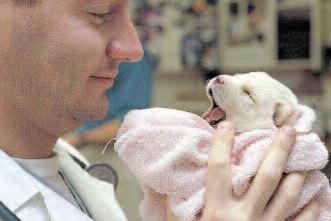
Following the successful completion of the Kresge Foundation Challenge that earned the School a $1.5million grant for the Vernon and Shirley Hill Pavilion,the School has raised an additional $5.5 million toward campaign initiatives such as student scholarship,clinical research,ongoing enhancements to radiology and MRI at New Bolton Center,and construction of a new Aquaculture Research Laboratory,also at NBC.
 BY KATHY KRUGER
BY KATHY KRUGER
The answer is only a mouse-click away now that researchers at Penn’s Center for the Interaction of Animals and Society (CIAS) have developed the C-BARQ On-Line,a web-based version of the Canine Behavioral Assessment and Research Questionnaire.As a benefit to Bellwether subscribers,a free preview of the C-BARQ On-Line is being offered until July 31,2006.During this introductory period,all recipients of Bellwether are free to evaluate as many dogs as they would like using the C-BARQ On-Line,and are welcome to share this offer with their families,friends, colleagues and clients.All information entered during this per iod will become part of the C-BARQ On-Line database and will make a positive contribution to present and future research on canine behavior and its pathology.
The or iginal paper-and-pencil C-BARQ was designed and created by Dr.James Serpell,Marie A.Moore Professor of Humane Ethics and Animal Welfare and director of the CIAS, and colleagues as a reliable, standardized method for evaluating and screening dogs for the presence and severity of behavior problems.Now, with the launch of the C-BARQ On-Line, the power of this empir ically validated tool is being made widely available to veterinarians,animal behaviorists,dog trainer s, researcher s, animal shelter s and rescue groups, guide and ser vice dog schools and other organizations that can benefit from having instant access to a dog’s behavioral profile.
The C-BARQ is truly unique.It is currently the only existing canine behavioral assessment instrument of its kind to be extensively tested for reliability and validity on large samples of dogs of many breeds.1 This testing process has enabled the identification of 12 distinct temperament factors or traits that are common to the majority of dogs, regardless of breed,age,sex or neuter status.When owners use the C-BARQ On-Line to evaluate their dogs,they are instantly provided with separate scores for all the most common behavior problems in dogs (i.e.,stranger-directed aggression,owner-directed aggression,stranger-directed fear,nonsocial fear,dog-directed fear or aggression, separation-related behavior,attachment/attention-seeking, chasing,excitability,touch sensitivity and trainability), together with a means of interpreting them.
In addition,the C-BARQ On-Line is simple to use, only takes about 15 minutes to complete and can be used by anyone reasonably familiar with the dog’s typical responses to ordinary day-to-day events and stimuli.
If you would like to see how your dog’s behavior measures up,and want to be one of the first to try this groundbreaking scientific tool for diagnosing and characterizing behavior problems in dogs,please visit the C-BARQ On-Line before July 31,2006 at www/vet/upenn.edu/cbarq.
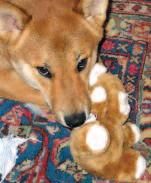
After July 31,2006,the C-BARQ On-Line will become a pay site available only to veterinary practices and other organizations.If you have questions about the C-BARQ On-Line, or would like infor mation about how your practice or organization can become a subscr iber to the C-BARQ On-Line service after the introductor y per iod, please e-mail kkr uger@vet.upenn.edu or call 215-746-0096.
1Hsu, Y and Serpell,J.A.“Development and validation of a questionnaire for measuring behavior and temperament traits in pet dogs.” JAVMA,223:1293–1300,2003.
ANIMALS SUMMER C AMP
JUNE 21 THROUGH JUNE 30
Penn’s Center for the Interaction of Animals and Society (www2.vet.upenn.edu/research/center s/cias/) is collaborating with the Univer sity City Ar ts League (www.ucartsleague.org) in forming an eight-day Animals Summer Camp for kids aged 6 to 10. Approximately 15 to 20 children will be enrolled. Faculty and students from Penn Veterinary Medicine will be involved,and a tour will be given of the Ryan Hospital on one day of the camp Please contact Kathy Kruger,assistant director of CIAS,at 215-746-0096 or kkr uger@vet. upenn.edu for details.
The following is a letter written in March 2005 by Michelle Chasin,a client of Dr.Margaret Gordon, V’02.In a kind of elegy,Michelle details for friends and family the experience of living with her cat Louis,her concern during his illness and the immense grief after his death.Dr.Gordon is an associate veterinarian at a New York animal clinic.
Many of you know that on March 13,2005, my cat Louis passed away from pancreatitis,a side effect of the cancer he had battled for nearly two years.He is survived by his brother Miles,his cousins Josephine and Little One,and the memory of his late cousin Agnes.
I adopted Louis and Miles from the North Shore Animal League 11 year s ago. I had intended to br ing home a single kitten, but when I saw Miles and Louis hugg ing at the back of their cage,their arms wrapped around each other’s necks, I was instantly smitten.
I have known and loved many animals,but Louis was my feline soul-mate.Call it chemistry,perhaps kismet,but we intuitively under stood each other in the pre-verbal space that the best relationships with animals allow us to inhabit.
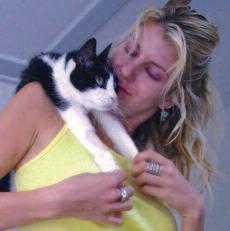
occasionally not returning home until the early hours of the morning,Louis would wait up (even Noah eventually fell asleep, magazine on his chest, light still on).
In summer 2003, Louis was diagnosed with small cell lymphoma. After a difficult first few months,by September Louis was back in top for m. Despite his twice-daily routine of pills and hydration, and his regular visits with the sage and compassionate Dr.Margaret Gordon, Louis’s final year-and-a-half would have been envied by even the most discriminating of cats.
His death,too,remains vivid in my memory as a singular tribute to his generous and courageous spirit. Louis spent his final day on the bed reclining with Miles and me,in a room overflowing with flowers and candles. An hour before the doctor was scheduled to arrive for the euthanasia,Louis roused himself and stumbled from my belly to my arms.A moment later,he stood so as to scrunch himself more tightly against me and took his last breath.His leg shook and then he collapsed in my arms.
Many felines earn their renown for their sharp wits, feisty temperaments and finicky preferences.Louis was more of a dopey,goofy lover.In fact,were it not for his distinctly feline luxuriating tendencies,he might even have been mistaken for—dare I say it—a canine.Louis was fond of draping himself around the back of my neck, waltzing with me as I prepared for an evening on the town,sitting with his paws on the edge of my tub as I showered and following me through the four apartments we shared over the years.Louis also never went to bed before I did.Even when I was in graduate school,
Every day that I knew Louis,my heart expanded.He had an amazing ability to rouse my capacity for deep love and nurturing.Though Louis is gone,I carry with me the memory of his benevolent spirit and,in my relationship with my human soul-mate,the great joy of living with an open heart.As a way of maintaining a connection with Louis,I have decided to fund a research study on small cell lymphoma in his honor at the University of Pennsylvania Veterinary School,the alma mater of Louis’s beloved vet.Given all I received from him,it seems fitting to mark his death with a g ift.
—MICHELLE CHASIN
“ ” Call it chemistry,perhaps kismet, but we intuitively understood each other....
Dr.Corinne Sweeney,professor of medicine,was appointed associate dean for New Bolton Center,and chief operating officer and executive director of the Widener Hospital for Large Animals.
In March, Dr.James Serpell, Marie A.Moore Associate Professor of Humane Ethics and Animal Welfare,will receive the 2006 Hill’s Animal Welfare and Humane Ethics Award at the American Animal Hospital Association conference in March 2006.
Dr.Sydney M.Evans,V’77,professor of radiology,has been promoted to professor and director of research in the Department of Radiation Oncology at the Ryan Veterinary Hospital.
Dr.Cynthia M.Otto,associate professor of critical care medicine,was named director of the Veterinary Clinical Investigations Center and associate chair for research in the Department of Clinical Studies–Philadelphia.Dr.Otto also was the keynote speaker at the Annual Emergency and Critical Care Symposium at the University of California–Davis,where she spoke on “Caring for the critical patient:Practical emergency medicine.”In January 2006,she was the featured speaker at the ACVECC Postg raduate Cour se at the Society of Cr itical Care Medicine Cong ress in San Francisco, where she spoke about “Sepsis in veterinary medicine.”
Dr Kathr yn Michel was promoted to associate professor of nutr ition in the clinician/educator track.
Bar ry Stupine, vice dean for administration and finance and executive director/chief operating officer of the Ryan Veter inary Hospital, was elected treasurer and member of the Executive Board of the Philadelphia Animal Care and Control Association.
Dr.Rosario Cerundolo,assistant professor of developmental biology,was elected president of the European College of Veterinary Dermatology in January 2006.Dr. Cerundolo also was awarded a grant from Royal Canin to study the effect of a soy-based diet on canine health.The work is being done in collaboration with Dr.Kathryn Michel,assistant professor of nutrition,and Dr.Ilana Reisner,assistant professor of behavioral medicine.
Dr.Robert L.Owen,V’76,diplomate of the American College of Poultry Veterinarians,was installed as president of the American Association of Avian Pathologists in July 2005.He will speak in China at the Metabolic Diseases Symposium and will open a New Bolton Center Poultry Field Office in Manheim, Pa.,in March.
In November 2005,Cold Spring Harbor Laboratory Press published The Dog and Its Genome by Drs.Elaine Ostrander, Kerstin Lindblad-Tohl and Urs Giger,the Charlotte Newton Sheppard Professor Chief of Section of Medical Genetics.
Dr.Jean-Pierre Saint-Jeannet, associate professor of developmental biology in the Department of Animal Biology,
was awarded a five-year RO1 from the National Institute on Deafness and Other Communication Disorders to study factors regulating inner ear specification in Xenopus
Dr.Jorge Guerrero,adjunct professor of parasitology, received the International Award from the Brazilian Association of Animal Health Marketing in August 2005.In addition,he received the Award for Academic Excellency from the Peruvian Academy of Veterinary Sciences in December 2005 and was elected vice president of the North American Veterinary Conference in January 2006.
Dr.Charles F.Reid,emeritus professor of radiology, received the American Association of Equine Practitioners’ Distinguished Educator Award,presented at the Annual Convention of the AAEP in December 2005.
In October 2005,anesthesia/critical care resident Dr. Benjamin Brainard,V’00, won third place in the residents’ abstract competition at the 2005 American College of Veterinary Anesthesiologists Conference in Atlanta.His abstract was entitled “Changes in pr imary hemostasis and prostaglandin expression with deracoxib or carprofen.”
Dr.Jeremy Wang,assistant professor of physiology,received a one-year seed g rant in Januar y 2006 from the Penn Genomics Institute to identify NXF2-expor ted mRNAs in mouse ger m cells using microarray.
Dr John Pehrson, associate professor of biochemistr y, was featured in the December 2005 Nature Milestones publication for his work on “Gene expression on the histone MacroH2A.”
Dr. Ber nd Dr iessen, associate professor of anesthesia and chief of large animal anesthesia, was a visiting professor at the University of Bari Veterinary School in Italy in December 2005. He gave three presentations on the pharmacology of alpha2 agonists and their use in equine practice,regional anesthesia for dentistry procedures in the horse and intravenous lidocaine infusion in horses undergoing abdominal surgery.Dr.Driessen and Dr.James Orsini,associate professor of surgery,received a two-year grant from the Morris Animal Foundation to develop a continuous perineural block technique for pain relief in the distal equine forelimb.
Dr.Gary Althouse,associate professor of clinical studies, was an invited panelist to help shape future research efforts for the March of Dimes Prematurity Research Initiative in Washington,D.C.
Dr.Gail K.Smith,V’74, professor of surgery,was an invited lecturer at the ACVS meeting in San Diego on osteoarthritis in cats.
In October 2005, Dr.Ina Dobrinski, associate professor of reproduction,presented “Germ cell transplantation and testis tissue xenografting in domestic animals”at the International Symposium on Stallion Reproduction in Germany.In December 2005,she presented “Transplantation of testis tissue”at the
Toxicology Graduate Group Seminar Series at the University of Illinois.
Donna Oakley,director of the Penn Animal Blood Bank; Dr. Kathryn Michel, associate professor of nutrition,clinician educator;and Dr.Chick Weisse,V’98,assistant professor of soft tissue surgery,traveled to the Waltham Centre for Pet Nutrition in England in November 2005,where they met with researchers and gave presentations on minimally invasive diagnostic and therapeutics and the blood bank.
In December 2005, Dr.Gary Smith, professor of population biology and epidemiology,spoke at the Johns Hopkins Bloomberg School of Public Health on “Epidemic disease in animals:Controversy and consequences.”He spoke at the Annual Biomedical Seminar at Chestnut Hill College on “Foot and mouth disease:Catastrophic infectious disease epidemics in domesticated animals”in November 2005.In addition,Dr.Smith has joined the Models of Infectious Disease Agent Study,an international research network developing computer-based simulations of infectious disease outbreaks.
Dr.Meryl Littman,V’75,associate professor of medicine, spoke at the North American Veterinary Conference in Orlando in January on “Lyme disease:What do to when the SNAP is positive.”In addition,an examination room at the Ryan Hospital was named in her honor in December 2005,made possible through donations from breeders and owners of soft-coated Wheaten terriers.
Dr. Andrew Wood, professor emer itus of radiology, presented the results of an NIH g rant (held with colleagues from Penn’s Medical School) to the Inter national Symposium on Therapeutic Ultrasound at Har vard. In Januar y 2006, he was named president of Penn’s John Morgan Society He also presented a seminar on “Large animal models for gene therapy”at the University of Flor ida Medical School.
In October 2005, Dr. Sher rill Davison,V’83, associate professor of avian medicine and pathology,was the featured expect on avian flu on “Radio Times with Marty Moss-Coane,”a syndicated show of National Public Radio.In December 2005,she gave a talk on avian flu at the PennAg Meat and Egg Committee Meeting.
In October 2005, Dr.Peter Dodson,professor of anatomy, was a guest of the Geological Bureau of Gansu Province in China for the dedication of the skeleton of Lanzhousaurus,a new dinosaur found in China.Also in October 2005,Dr.Dodson and Dr.You,Geological Institute of Beijing,named a new dinosaur, Auroraceratops rugosus,in honor of Dr.Dodson’s wife,Dawn.
Anesthesiology staff members Lori Marturano and Stacey Reiling were awarded certifications as veterinary technician specialists in anesthesia by the Academy of Veterinary Technician Anesthetists.
If you have submissions for Rosettes and Ribbons,please e-mail them to John Donges at jdonges@vet.upenn.edu.Also, watch for the latest in Rosettes and Ribbons at www.vet.upenn.edu/bellwether.
2006 is the 25th Anniversary of the Matthew J.Ryan Veterinary Hospital Building! Join us as we celebrate this milestone in the School’s history.Watch for details on our Web site in the months ahead at www.vet.upenn.edu.
MAY 2006
5 – 5:00 p.m. Inaugural Specialty Day
“The Melding of Medicine:Trends in Human and Animal Health” Matthew J.Ryan Veterinary Hospital Philadelphia,Pa.
10 – 9:00 a.m.-1:00 p.m. Opportunity Scholarship Annual Retreat New Bolton Center Kennett Square,Pa.
10 – 2:00 p.m.-4:00 p.m. Veter inar y Medical Alumni Society Executive Board Meeting
New Bolton Center Kennett Square, Pa.
15 – Commencement of the School ofVeterinary Medicine
Philadelphia, Pa.
OCTOBER 2006
6–7 Alumni Weekend
Philadelphia,Pa.
28 Parents and Partners Day
Philadelphia, Pa.
18
Rush Shippen Huidekoper Society Dinner Adventure Aquarium,Camden,N.J. Opportunity Scholarship Reception
Global Food Symposium
Vernon and Shirley Hill Pavilion Dedication
Rosenthal Imaging and Treatment Center Celebration
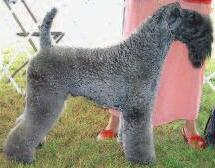
Coagulation factor XI (FXI) deficiency,a heredity bleeding disorder,was first described in the Kerry blue terrier in the 1980s.Since then affected dogs have been recognized regularly,but the distribution and frequency of this disorder is unknown in Kerry blue terriers.The defect is inherited by an autosomal trait with dogs homozygous and possibly heterozygous having an excessive bleeding tendency.The mutation causing FXI deficiency in Kerry blue terriers has very recently been identified at Penn, which is now offering the oppor tunity to screen Kerry blue terriers at risk for this mutation.
Dogs with hereditary FXI deficiency may exhibit an increased bleeding tendency following trauma or surger y (even after too-shor t nail clippings or simple surg ical skin-mass removals) or rarely appear to develop spontaneous bleeding.Some FXI-deficient dogs may bleed excessively after one event,but not others.Furthermore,as some dogs remain completely asymptomatic,the diseased/mutant gene may be unknowingly passed on to the next generation,not only via heterozygous but also homozygous affected dogs.Carriers or heterozygotes have one mutant and one normal gene,and homozygous animals have two mutant copies of the diseased gene. Homozygously affected animals are believed to have a more severe bleeding tendency.
Screening Kerry blue terriers with a clotting test may suggest FXI deficiency to a veterinarian,and measurement of low plasma FXI coagulant activity could confirm a diagnosis of FXI deficiency at a reference laboratory. However,coagulation tests generally require blood collection in citrated tubes,which are immediately separated and shipped, making it impractical as a simple screening test.Only a small number of Kerry blue terriers have been tested,and hence the frequency and bleeding tendency are as yet unknown.
Drs.Eva Tcherneva,research associate,and Urs Giger,Charlotte Newton Sheppard Professor and chief of Section of Medical Genetics,have developed and made available at their laboratory a mutation-based DNA test to screen for FXI deficiency in Kerry blue terriers.This test can clearly identify homozygous and heterozygous affecteds,as well as normal Kerry blue terriers.They recommend testing any Kerry blue terrier with signs of bleeding,as well as its relatives.Furthermore,screening these terriers prior to breeding is advisable to limit the spread of this disorder,particularly via any popular sires. Carriers still can be used in future breeding programs,but identifying carriers will allow the targeted breeding of carriers with desirable traits to normal dogs,without producing homozygous affected dogs,as long as the offspring are also tested and only unaffected dogs used thereafter.
The School’s Josephine Deubler Genetic Testing Laborator y offers screening for FXI deficiency in Kerry blue terriers.Samples suitable for this DNA test include 12 ml EDTA-anticoagulated blood (preferable) or 2–3 cheek swabs (with special cytobrushes).Brushes and test submission forms are available from the lab (www.vet.upenn.edu/penngen),through the United States Ker r y Blue Ter r ier Club (www.uskbtc.com) or Kerry Blue Ter r ier Foundation (www.kerryblues.info).For more infor mation on canine FVII deficiency and for screening mater ials, please contact Dr Giger (215-898-8894 or -8830; penngen@vet.upenn.edu). The or ig inal studies and the DNA screening are supported in part by the Kerry Blue Ter r ier Foundation, the National Institutes of Health and some owner s and breeders of Kerry blue terriers.
A paper entitled “Evaluation of a behavioral assessment questionnaire for use in the characterization of behavioral problems of dogs relinquished to animal shelters”—coauthored by Dr James Serpell, Marie A.Moore Professor of
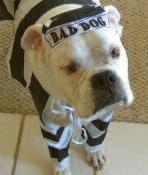
Humane Ethics and Animal Welfare and director of the Center for the Interaction of Animals and Society,and colleagues from the University of California–Davis— appeared in the December 2005 issue of the Journal of the American Veterinary Medical Association.The goal of the study was to evaluate the accuracy of a behavioral intake questionnaire given to owners leaving their dogs at shelters.
Animals participating in the study were 54 dogs being relinquished to a shelter and 784 dogs belonging to clients of the Ryan Veterinary Hospital.The owners leaving animals at shelters were split into two groups:one was guaranteed that all information regarding the animal would be kept confidential,and the other was told information would be shared with shelter staff.Compared with the client owned–group data,significantly more relinquished shelter dogs in the confidential group were reported to have owner-directed aggression,stranger-directed aggression, dog-directed aggression or fear,stranger-directed fear, nonsocial fear and separation-related behaviors.Results suggest that behavioral questionnaires may sometimes provide inaccurate infor mation in a shelter setting,but the information may still be useful when evaluating behavior of relinquished dogs.
With funding supplied by the Mor r is Animal Foundation, Dr. Chick Weisse,V’98, assistant professor of soft tissue surgery,and Dr.Craig Clifford,former resident of oncology at the Ryan Veterinary Hospital,found that magnetic resonance imaging is extremely useful as a diagnostic tool for dogs with liver and splenic masses.Using MRI sequences,scientists can see how much a cancer has spread,giving owners an option of foregoing surgery in favor of MRI.
Dr.Dottie Brown, assistant professor of surgery at the Ryan Veterinary Hospital,participated in a study examining new ways to help relieve the pain of dogs with cancer or ar thritis.The results show some unusual and unexpected pain-management properties of a compound
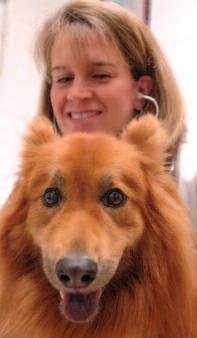
called resiniferatoxin (RTX),a red-hot sap produced by a Moroccan cousin of the chili pepper plant. Researchers at the National Institutes of Health in an attempt to better understand pain in human beings discovered that,in cancer patients,pain messages were sent to the brain by certain nerve cells in the spine.But these nerve cells,the researchers found, could be killed if infused with calcium—and once killed, the pain messages could be stopped. When RTX—about 1,000 times more potent than the capsaicin that makes chili peppers hot—comes into contact with the pain-transmitted ner ve cells, it spur s a r ush of calcium into the cells, destroying them and providing relief from the pain of cancer.
The NIH team found RTX seemed to work on lab animals,but needed more evidence to support their claim. And because humans and dogs are so similar,medically speaking,they turned to Dr.Brown,whose work had put her in contact with dogs suffering from severe cancer pain.Dr.Brown then selected dogs that might make good case studies.She chose a group diagnosed with cancer that were so painful they were unable to put weight on their limbs.
After taking injections of RTX,the same dogs could run and jump almost as if they felt no pain at all.The cancer persisted—and eventually proved fatal—but owners reported weeks or months of good times after RTX treatment.The initial trial was such a success that Dr. Brown will conduct another,more thorough study this summer.Meanwhile,the NIH team is pushing to begin testing RTX on humans soon.
Dr.Gail Smith,V’74, professor of surgery,has stepped down as chair of the Department of Clinical Studies-Philadelphia.He plans to transition back to the faculty after a sabbatical at the National Institutes of Health, where he will add genomics to his expertise,and then will return to use this powerful approach to further broaden the impact of PennHIP® (University of Pennsylvania Hip Improvement Program) on canine health.Dr.Smith is inter nationally known for his discovery and development of PennHIP®,which is a radiographic technique for the early diagnosis of canine hip dysplasia.Through his extensive work in the field of orthopaedics,Dr.Smith has applied engineering principles to the study of veterinary orthopaedic conditions of the knee,spine and hip.
Dr. Shel Steinberg, V’59, emer itus professor of neurology, has assumed the administrative responsibilities of chair in the inter im until June 30,3006.
Dr James Ser pell, Mar ie A. Moore Associate Professor of Humane Ethics and Animal Welf are,was named interim chair of the Department of Clinical Studies–Philadelphia, beginning July 1,2006.Dr.


Serpell is also head of Penn’s Center for the Interaction of Animals and Society,whose broad goal is to promote understanding of a wide range of human–animal interactions and relationships,including those with companion animals,farm animals,laboratory animals,zoo animals and free-living wild animals.In addition to publishing in a variety of international journals, Dr.Serpell also is author of the critically acclaimed book In the Company of Animals:A Study of Human–Animal Relationships
Also effective July 1,2006, Dr.David Nunamaker,V’68, will step down as chair of the Department of Clinical

Studies–New Bolton Center after 12 years of service.He will return to his laboratory after a brief sabbatical,and looks forward to continuing to contribute to the Department as an active faculty member. Dr.Nunamaker has spent his entire career at Penn:In addition to serving on the faculty for almost 40 years,he has held a number of senior administrative positions, including director of the Richard S.Reynolds,Jr. Comparative Orthopaedic Research Laboratory and head of the Mark and Lila Allam Center for Equine Sports Medicine.In 1979,Dr.Nunamaker was named the Jacques Jenny Professor of Orthopaedic Surgery.In 1982,Dr. Nunamaker advanced the field of equine orthopaedic medicine when he began using an exter nal fixator to stabilize fractures in horses’legs.Dr.Nunamaker’s other research topics include fracture healing,internal fixation, bone remodeling,bone fatigue and biomechanics.

Kate Judge has been named assistant dean of advancement and communication of the School of Veterinary Medicine. She assumed her new responsibilities on February 28,2006.
Ms.Judge brings with her an impressive array of past successes.Her immediate past position was as special assistant to the senior vice president of development for the National Headquarters of the American Red Cross.Prior to her work with the National Red Cross,Ms.Judge served as the development leader of the local (Southeastern Pennsylvania) American Red Cross chapter.
From 1992–2000 she served as assistant dean for development and alumni relations for the University of Pennsylvania School of Nursing.
In returning to Penn,Ms.Judge succeeds Mark Stuart, who served as Penn Vet’s lead development officer for five years.Mr.Stuart departed October 2005 to become head of membership and development for the San Diego Zoo. During his tenure at Penn,Mr.Stuart achieved many successes, including the naming of the new Teaching and Research Building and the overwhelming success of a $100,000,000 campaign.
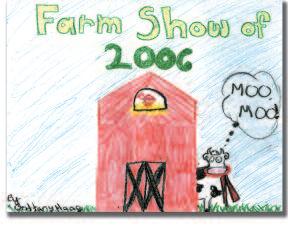

The School hosted visitors at this year’s Pennsylvania Farm Show,sharing the latest in veterinary care and research,including how U.S.poultry is protected from avian flu by extensive surveillance,highly sophisticated testing methods,rigorous biosecurity protocols and hygienic rearing methods.Art supplies for youngsters were available at the School’s booth,and included here are a few samples of the Farm Show as seen through the eyes of children.
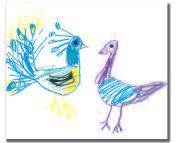
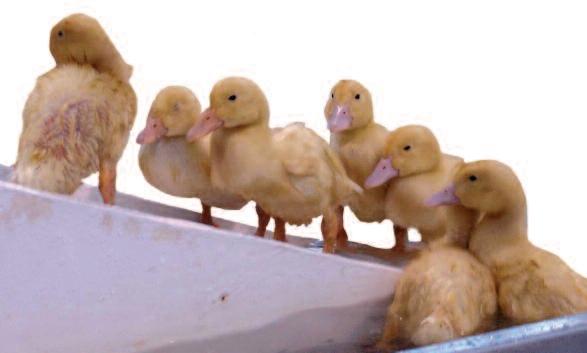
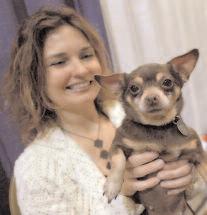
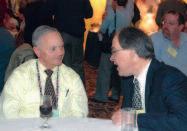
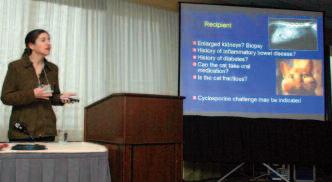
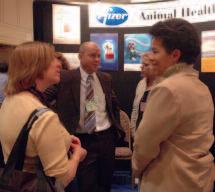
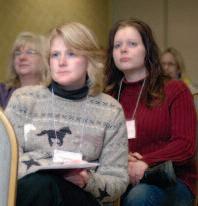
The Penn Annual Conference is our School’s tradition in continuing education since 1900.Each year,more than 1,200 veterinarians and veterinary technicians from throughout the region attend the conference,with its outstanding slate of speakers and many opportunities for informal discussion.The conference provides a wonderful opportunity to meet new Penn faculty and reconnect with old teachers,colleagues and classmates in a warm,collegial environment.This year’s theme was “Treating the Animal Within:Veterinary Internal Medicine.”
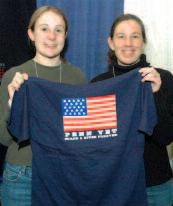

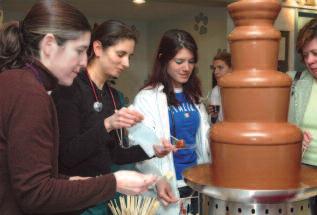
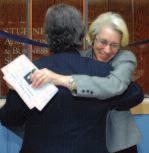
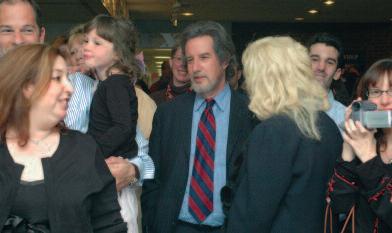
On February 24,2006,the Stupine Admissions and Business Suite in the Ryan Veterinary Hospital was dedicated to Barry Stupine,the School’s vice dean for administration and finance,and the Hospital’s chief operating officer and executive director.The suite was renovated and renamed in honor of Barry for his decades of leadership at the Hospital and the School of Veterinary Medicine.
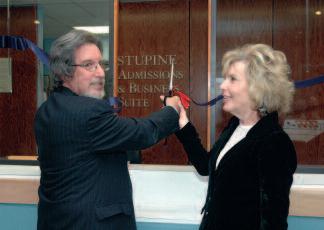
3800 Spruce Street
Philadelphia, PA19104-6008
Address Service Requested
